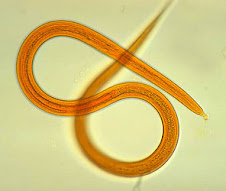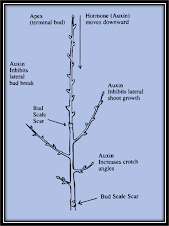
2. What type of growth pattern is exhibited by the fruit fly population? Is it the same type of growth as in the rabbit population? Explain
The fruit fly population exhibits logistic growth, while the rabbit populations exhibits exponential growth. Limiting factors must have affected the growth of the fruit fly population but not the growth of the rabbit population.
3. Does either graph indicate that there is a carrying capacity of the population? When does the population reach its carrying capacity? What is the maximum number of individual that can be supported at that time?
The graph of the fruit fly population seems to reach its carrying capacity at 35 days, when 320 individual can be supported.
4. what might happen if a group of predators move into the rabbit's habitat during the tenth generation and begin eating the rabbits?
With predators added, the rabbit population would exhibit logistic growth, not exponential growth, and the population's growth would slow, stop, or decrease in later generations.
5-2 Section Assessment
1. List three density-dependent factors and three density-independent factors that can limit the growth of a population. Density-dependent: competition, predation, parasitism and disease. Density-independent: unusual weather, natural disasters, seasonal cycles, human activities.
2. What is the relationship between competition and population size?. When population become larger and more crowded, organisms must compete with one another for food, water, speace, sunlight, and other essential resources.
3. If an entire lynx population disappears, what is likely to happen to the hare population on which it preys?. The hare population would probable undergo explosive growth.
5. Give an example of a density-independent limiting factor that has affected a human population. Describe how this facctor changed the human population. Irish Potato Famine: devastated the potato crop in Western Europe in 1845. Its greatest impact was the potato blight epidemic in Ireland. In 1845 and again in 1848 a third of the potato crop was destroyed by blight, losses at the extremes of previous European experience. Even more disastrously, three-quarters of the crop failed in 1846. In all, one million people died of famine-related diseases, and up to 1.5 million more emigrated.






















No hay comentarios:
Publicar un comentario